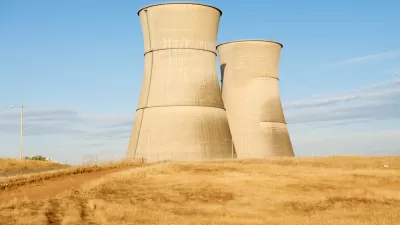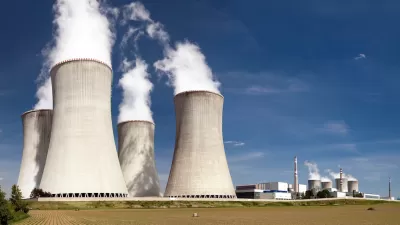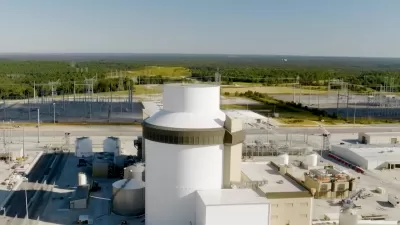Included among a budget proposal that likely won't go anywhere, the Obama Administration is recommending the end of a project that would create nuclear power by dismantling nuclear weapons.
"Time may finally be running out on the Mixed Oxide Fuel Fabrication Facility, a multibillion-dollar, over-budget federal project that has been hard to kill," reports James Risen. The headline of the story offers a translation of the jargon: A half-built nuclear plant might be too expensive to finish.
"The Energy Department has already spent about $4.5 billion on the half-built plant near Aiken, S.C., designed to make commercial reactor fuel out of plutonium from nuclear bombs," adds Risen. "New estimates place the ultimate cost of the facility at between $9.4 billion and $21 billion, and the outlay for the overall program, including related costs, could go as high as $30 billion."
Those costs, and an estimate that the project could be in operation by 2040, means that the Energy Department recommended abandoning the project in the federal budget released by the Obama Administration this week.
Meanwhile, state officials and members of the South Carolina congressional delegation, some of whom are also "the Republican Party's most determined opponents of government spending," have vowed to complete the project. The article includes a lot more back and forth between opponents and proponents of the project. The implications of the story reach out to Carlsbad, New Mexico, where an alternative approach to disposing of nuclear weapons would store the waste deep underground in salt formations.
FULL STORY: Half-Built Nuclear Fuel Plant in South Carolina Faces Test on Its Future

Study: Maui’s Plan to Convert Vacation Rentals to Long-Term Housing Could Cause Nearly $1 Billion Economic Loss
The plan would reduce visitor accommodation by 25,% resulting in 1,900 jobs lost.

North Texas Transit Leaders Tout Benefits of TOD for Growing Region
At a summit focused on transit-oriented development, policymakers discussed how North Texas’ expanded light rail system can serve as a tool for economic growth.

Why Should We Subsidize Public Transportation?
Many public transit agencies face financial stress due to rising costs, declining fare revenue, and declining subsidies. Transit advocates must provide a strong business case for increasing public transit funding.

How to Make US Trains Faster
Changes to boarding platforms and a switch to electric trains could improve U.S. passenger rail service without the added cost of high-speed rail.

Columbia’s Revitalized ‘Loop’ Is a Hub for Local Entrepreneurs
A focus on small businesses is helping a commercial corridor in Columbia, Missouri thrive.

Invasive Insect Threatens Minnesota’s Ash Forests
The Emerald Ash Borer is a rapidly spreading invasive pest threatening Minnesota’s ash trees, and homeowners are encouraged to plant diverse replacement species, avoid moving ash firewood, and monitor for signs of infestation.
Urban Design for Planners 1: Software Tools
This six-course series explores essential urban design concepts using open source software and equips planners with the tools they need to participate fully in the urban design process.
Planning for Universal Design
Learn the tools for implementing Universal Design in planning regulations.
City of Santa Clarita
Ascent Environmental
Institute for Housing and Urban Development Studies (IHS)
City of Grandview
Harvard GSD Executive Education
Toledo-Lucas County Plan Commissions
Salt Lake City
NYU Wagner Graduate School of Public Service





























